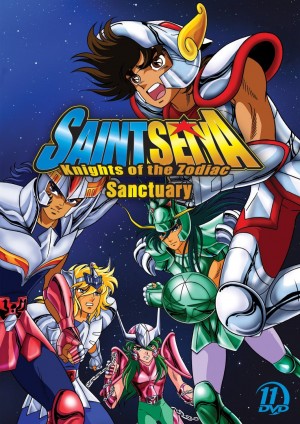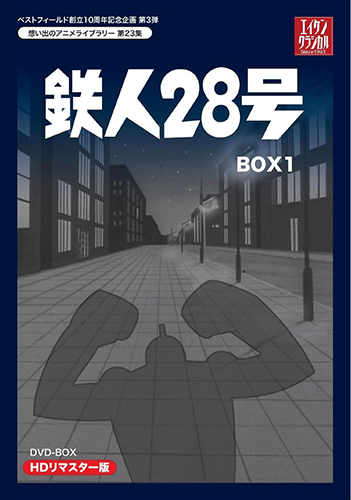
Ever since anime has hit the airwaves in the 1950s in Japan, it instantly spread to numerous regions and nations around the world. Shortly after Tetsuwan Atom, Tetsujin 28, and Mach Go Go Go debuted in Japan, they were adapted in other nations as Astro Boy, Gigantor and Speed Racer. Though they were localized versions and not true representations of the original source material, they still managed to become a part of pop culture in many nations. As the 90s ended with Cartoon Network’s Toonami, anime finally got its due in the US with how the network acknowledged that some of its programming were Japanese in origin. Back then, nobody knew that Gigantor, Speed Racer, or Voltron were from Japan. Previously, we have done an Editorial Tuesday to the History of Anime on Television, so as an extension to that, we’d like to explore why certain anime titles get a unique sense of popularity in certain regions.
Saint Seiya (Europe and Latin America)

One notable classic anime that has a following in Latin America and Europe is Saint Seiya, or Knights of the Zodiac depending on the language. It never really got that same success in the US because it never aired there during its prime. The reason why Saint Seiya was largely exported to those nations is because anime during the 1980s, it was actually cheap to license the anime, and easy to localize, while the higher cost of American produced shows were more expensive to license. As to why Saint Seiya resonated with European and Latin American audiences, other than the explosive action, it’s hard to definitively pinpoint but there are some arguable assumptions. Though the series largely takes influence from Greek mythology but with a samurai spirit spin to it. Some speculate that the Catholic populations of those countries were able to relate to its themes. Saint Seiya is an anime about sacrifice and devotion to your God, and how the hierarchical structure of the saints resembles that of angels.
As to why it never got aired during its prime in the US, Saint Seiya just happens to contain a lot of violence that wouldn’t pass FCC regulations, and if you censored it, it would arguably censor more than 70% of the series. When taking into account that certain European and Latin American nations don’t have such standards with its broadcasting, it was uncensored for fans to enjoy. In addition to the violence that wouldn’t pass the PCC, there’s also the Shun character who could be changed into a woman, as it was for Zoisite in Sailor Moon due to the androgynous design those characters. Also, there’s the bizarre nudity scene with Lizard Misty, one of its villains.
In the end, it was largely thanks to Jerome, a French fan that the Hades arc got an OVA in the early-2000s. He used a drama CD and made his own animated projected based on that drama CD. Lastly, the French love Saint Seiya to the point that one fan tried to get on a singing show by singing Pegasus Fantasy, the theme song to Saint Seiya.
Chodenji Machine Voltes V (The Philippines)
Shortly before Yoshiyuki Tomino premiered with Gundam, he served as a producer to Chodenji Machine Voltes V, which managed to get a very unique following in the Philippines. During the prime of Voltes V, the Philippines was under martial law under Ferdinand Marcos. Shortly before the finale in 1978, Marcos banned the show due to its excessive violence. However, due to the show’s themes of revolution and rebellion, many of those against the Marcos regime claimed that he saw it as a threat to his rule.
After he was ousted as president in 1986, the series returned to the airwaves and the remaining cancelled episodes were compiled as Voltes V: The Liberation, a theatrical movie. Since its comeback, it became a part of Filipino pop culture in ways you couldn’t imagine an anime ever could. Some Filipino fans speculate that Marcos cancelling the show caused kids at the time to rebel against him as they came of age. In recent years, artists in the country have mixed imagery from the anime and the Marcos regime to express what it was like under martial law.
Space Cobra (France)
The 1980s hit, Space Cobra, has a large following in France to the point that French director Alexandre Aja wants to make his own take on it. Beyond the series’ influences from Western pop culture from the time, it just happens to be that the design of the Cobra character largely takes influence from one of France’s most famous actors, Jean-Paul Belmondo. Thanks to its popularity in France, Cedric Biscay’s Shibuya Productions plans on co-producing a new Cobra anime!
Final Thoughts

The popularity of anime around the world and specific nations is rather intriguing. Though some anime were (and/or weren’t) popular domestically in Japan, other nations found ways to embrace it. For some, they found the programming to be exciting. For others, they could recognize the cultural influences. And last, some anime played a part in bringing down a dictator. Beyond being popular with certain nationalities, anime has played its part being popular with other minority groups. Sailor Moon has become a symbol for the MOGAI community thanks to its positive portrayal of characters within that group. Though anime is always conceived for a Japanese audience, it’s always amazing to see how it empowers certain cultures of certain generations.

